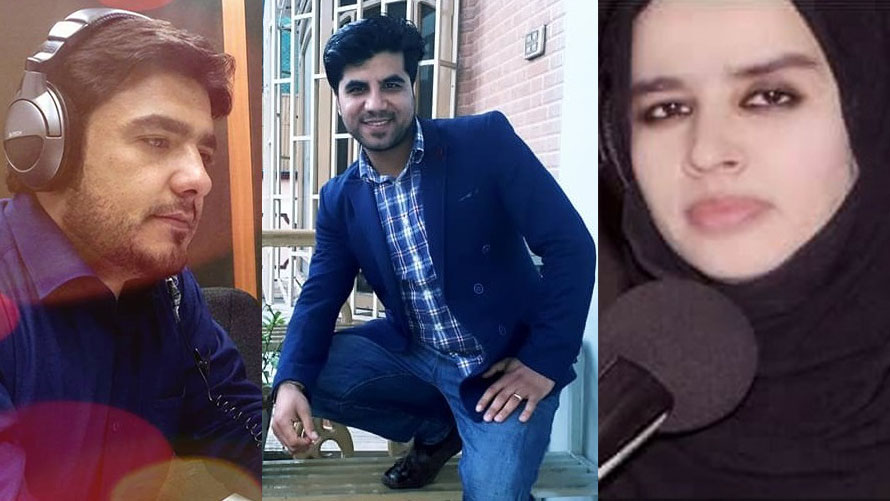RFE/RL Remembers Fallen Afghan Service Colleagues

WASHINGTON — Two years ago today, three journalists with Radio Free Europe/Radio Liberty’s (RFE/RL) Afghan Service were killed in Kabul, Afghanistan, in a coordinated double suicide-bomb attack that shocked the world with its deliberate targeting of first-responders.
The extremist group Islamic State (IS) claimed responsibility for the April 30, 2018 blasts, which the Afghan Journalists Center reported killed at least nine journalists, the worst toll ever among media workers in a single attack in the country.
“We are still devastated by this attack, which took three remarkable young journalists from us, from their families, and from their communities,” said RFE/RL President Jamie Fly. “Our Afghan Service has built a formidable reputation for being on the front lines and an essential news source for the Afghan people, but this day reminds us of the profound risks, and the sacrifices our journalists make every day. They are not forgotten, and their spirits live on in the work of their colleagues in Kabul and at our headquarters here in Prague.”
Video journalist Abadullah Hananzai, 26, was killed after rushing to the site of an attack in the capital city’s Shash Darak region, where a suicide bomber on a motorcycle had blown himself up. He died at the scene when a second suicide attacker posing as a cameraman exploded a bomb targeting responders to the first blast. Hananzai had been the lead reporter on an extensive anti-narcotics project run by the Afghan Service, known locally as Radio Azadi.
Sabawoon Kakar, 30, an unflinching reporter who often put himself at the scene of Kabul’s unremitting violence, was one of the first journalists to arrive at the site of the Shash Darak blast. He was critically wounded in the second attack and died in a hospital several hours later. Kakar was a leading and versatile member of the Service’s video team, who reported on counterterrorism operations and security issues.
Maharram Durrani, 28, a recent hire who was still in training, was on her way to the Afghan Service’s Kabul bureau when she was killed in the first blast. She was a third-year student of Islamic law at Kabul University who was interested in the media as a means “to provide information to all people,” and had joined Azadi to expand its programming for women.
Afghan Service Director Qadir Habib said in a ceremony recalling his colleagues that we “grieve and mourn the death of these young members of the Radio Azadi family, but we continue to report… We were hit hard on that day, but now we stand taller and stronger than before in the face of extremist propaganda and disinformation.”
Kabul’s Shash Darak region is home to NATO headquarters, the Afghan intelligence service, and several foreign embassies and offices. Afghan Health Ministry officials at the time put the number of dead from the attacks at 25, and police said 45 persons were hospitalized.
Other journalists killed in the April 30 attacks were AFP photographer Shah Marai, Ali Salimi and Salim Talash of MashalTV, Nawruz A. Khamoosh and Ghazi Rasuli of 1TV, and Yar Mohammad Tokhi of ToloNews. BBC Afghan reporter Ahmad Shah, 29, was killed the same day in a separate attack in Khost Province on the Pakistani border.
Hananzai, Kakar, and Durrani were among 21 journalists whose names were added in 2019 to the Newseum’s Journalists Memorial commemorating reporters who died in the line of work.